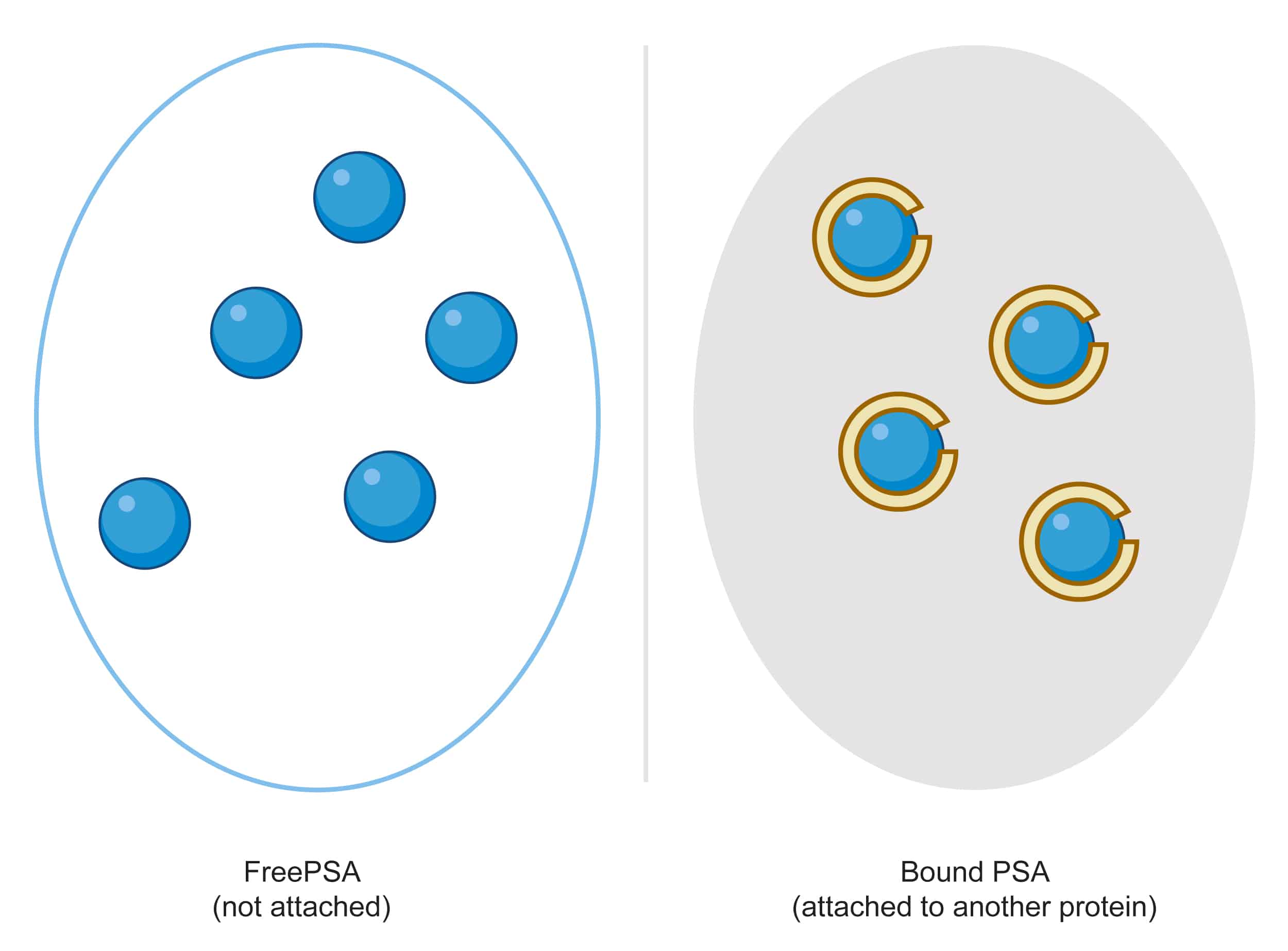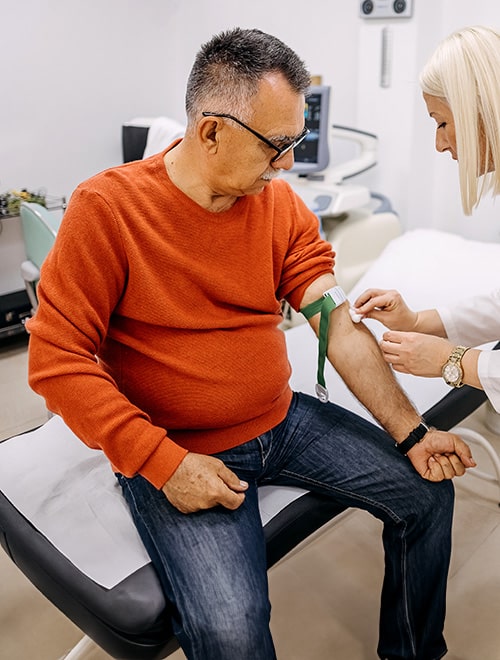- 4 min read
The free to total PSA test
What is PSA?
Prostate specific antigen (PSA) is a protein made naturally in the prostate gland. It’s usually found in semen, but small amounts enter the blood.
A PSA test that measures total PSA is the usual first step to find out if there are any issues with your prostate. If your test result shows that your PSA is elevated, you will need further tests to work out what is going on with your prostate. One test your doctor may recommend for you is a free to total PSA test.
This section of your toolkit may help you understand what this test does and why it may be useful for you.
Why may the free to total PSA test be recommended to you?
The free to total PSA test is usually recommended if your PSA test results show that your PSA level is elevated for your age. The result from this test can help your doctor determine if your elevated PSA level could be due to prostate cancer or to a non-cancerous enlargement of your prostate (BPH, benign prostatic hyperplasia).
Your doctor may recommend a free to total PSA test if PSA testing shows that:
- your PSA level was high (>2 ng/mL for men with family history, or >3 ng/mL for men 50 – 70 years of age) on one or more repeated tests
- your PSA level was just above the normal range, you are a younger man and/or you have a family history of prostate cancer
The results from this test will help guide your doctor on whether you need further testing and if you need to be referred to a urologist.
What does the free to total PSA test measure?
The free to total PSA test is a comparison between the free and bound PSA levels.
The free to total PSA test measures:
- Free PSA – PSA not bound to protein in the blood
- Total PSA – free and bound PSA (PSA attached to proteins in the blood)
The comparison between the free and total PSA is then calculated as a ratio — free PSA/total PSA.

What does free and bound PSA mean?
PSA in the blood will float freely or will be attached to blood proteins. These are called free PSA and bound PSA.
Why is free PSA tested?
Free PSA is more common in non-cancerous prostate conditions. So, if you have higher levels of free PSA compared to total PSA you are more likely to have a condition known as benign prostatic hyperplasia (BPH), which is not cancer and can be treated with medications and sometimes surgery.
But if your free PSA levels are low compared to total PSA, then there is a greater chance you may have prostate cancer and you will need further testing to work out if you have the disease.
How is the free to total PSA test measured?
The free to total PSA test is a blood test. It should be quick and relatively painless.
The blood sample is then sent to a pathology laboratory to analyse. They measure the total and free levels of PSA in the blood, calculate the ratio, and send your doctor a report of the findings.

Free to total PSA ratio results – what do they mean?
When your doctor receives your report, they will discuss the results with you. The report will show your levels of free PSA and total PSA as well as a calculated ratio showing the difference between the two (free PSA/total PSA).
If you have less free PSA than total PSA in the blood, the free to total ratio will be low and your risk of prostate cancer is higher.
If you have more free PSA than total PSA in the blood, the free to total ratio will be high and your risk of prostate cancer will be lower. This result can also mean that your previously high PSA test results may be due to a non-cancerous condition like benign prostatic hyperplasia (BPH).
Simply put:
High free PSA/total PSA ratio = lower risk of prostate cancer
Low free PSA/total PSA ratio = higher risk of prostate cancer
What happens next?
If your PSA levels stay high and your free to total PSA ratio is low, meaning you have a higher risk of prostate cancer, your doctor will talk to you about having more tests and this may or may not include a newer PSA test called the prostate health index.
Either way, if your doctor still has any concerns, they will refer you to a urologist to rule out or diagnose prostate cancer.
The PSA test (total PSA test) is the first test you will have when checking for prostate cancer. If your PSA blood levels are higher than expected for your age, your doctor may recommend a free to total PSA test. This may give you a better idea of whether you are at risk of prostate cancer or if you have an enlarged prostate without cancer.
Key points
- The free to total PSA test is a comparison between the total and free PSA levels in the blood.
- The free to total PSA test may be recommended when standard PSA tests show high PSA levels for your age.
- Free PSA levels may help identify benign prostatic hyperplasia, as free PSA is more commonly associated with non-cancerous prostate conditions.
- It uses a ratio of free PSA to total PSA to predict prostate cancer risk.
- Your doctor will talk to you about what the test results mean for you.
- They will also discuss if further examinations or tests are recommended.




